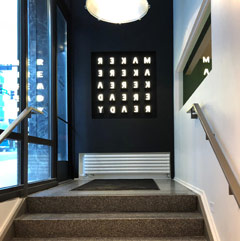While many hoteliers may inwardly groan at the cost of a full-property renovation, giving a hotel a facelift is a great way to boost guest satisfaction, which in turn leads to higher occupancy, revenue growth, and an overall more profitable business. While effective renovations can generate a tremendous return on investment (ROI), executing a renovation successfully requires that hoteliers work in tandem with designers, operators, and construction workers to create a cohesive final product. Going into this process with a plan is imperative, as clashes along the way result in delays and lost revenue.

First, the project lead must identify what the renovation is aiming to accomplish. Is it time for a property improvement plan (PIP)? Is the hotel changing flags? Is the property just looking tired and in need of a refresh? From there, the hotelier can start planning in earnest. And, while logistics are important—for example, all of the furnishings, fixtures, and equipment (FF&E) must be functional, durable, and meet the applicable brand standards—to achieve the greatest ROI, design must most of all meet guests’ expectations. Marjorie Feltus Hawkins, founder and principal of Nashville-based FH Design says that the impact design has on guests cannot be underestimated. “Design ties into everything—functionality, comfort, atmosphere, and, of course, a property’s marketing and business strategies. If it’s not thoughtful and cohesive, the renovation won’t have the desired effect.”
According to Feltus Hawkins, telling a hotel’s story through design is key to making that property appealing to any guest who walks through the lobby doors, regardless of the reason for their stay. She says, “Before undergoing any renovation, the hotelier should figure out how their hotel fits into the community and the story it wants to tell. When designing a renovation, it is so important to hone in on making sure that signature story stands out.”
Telling a story through a property’s design may take many forms. It could even include cost-saving measures like using upcycled or found items from the property’s past to complement the renovation. Understanding the story and using it in the hotel’s branding not only allows for design creativity, but it also makes for a more cohesive final product, regardless of a property’s location, brand, or market segment.
Additionally, nailing the design is only half the battle when it comes to executing a successful renovation; hoteliers must also prepare for the financial side of a project. Marco Manzie, founder and president of Paramount Hospitality Management, a hotel management company based in Atlanta, says that planning a project’s cost in advance is imperative. “The last thing owners want is to be surprised by ongoing costs associated with a renovation project, so every last little detail needs to be accounted for and money needs to be set aside to cover those costs.”

These details go beyond trying to figure out exactly how much renovations will cost; they also include choosing products that offer durability and functionality, as well as pleasing design. By incorporating durable design elements, hoteliers are able to generate greater ROI because they won’t be replacing carpets or furnishings before the renovation becomes outdated. Manzie notes that it may take a little more work on designers’ and hoteliers’ parts to find the right mix of design and functionality. “For example, choosing a fabric isn’t as simple as picking something that has a nice design. Hotels need furnishings made with quality, stain-resistant fabrics, which might be pricier upfront than something less durable. But we also have to consider the costs a fabric would incur throughout its useful life. Hoteliers shouldn’t be purchasing design elements that require a lot of upkeep to look fresh,” he explains.
Feltus Hawkins agrees that durability is extremely important, and notes that to maximize ROI on renovations, designs should have an element of timelessness, as a renovation should be able to remain relevant for at least seven years without major updates.
If an owner is preparing for a PIP, Manzie recommends looking to go above and beyond the minimum requirements of the plan. “Although it may cost more, the stronger your renovation, the better your ROI. Don’t hesitate to take things up a notch, because it could attract a higher-rated clientele that sets a property apart from its competitive set. It provides a little more of a leading edge,” Manzie says.
Achieving synergy throughout all of the components that go into a renovation helps owners maximize their ROI, but most of all, properties just need to be true to themselves. “It’s more than what’s trendy today. If you want something that’s timeless and complements the hotel, property, and guest experience, you have to dive down into the soul of your customer base,” Feltus Hawkins says.











